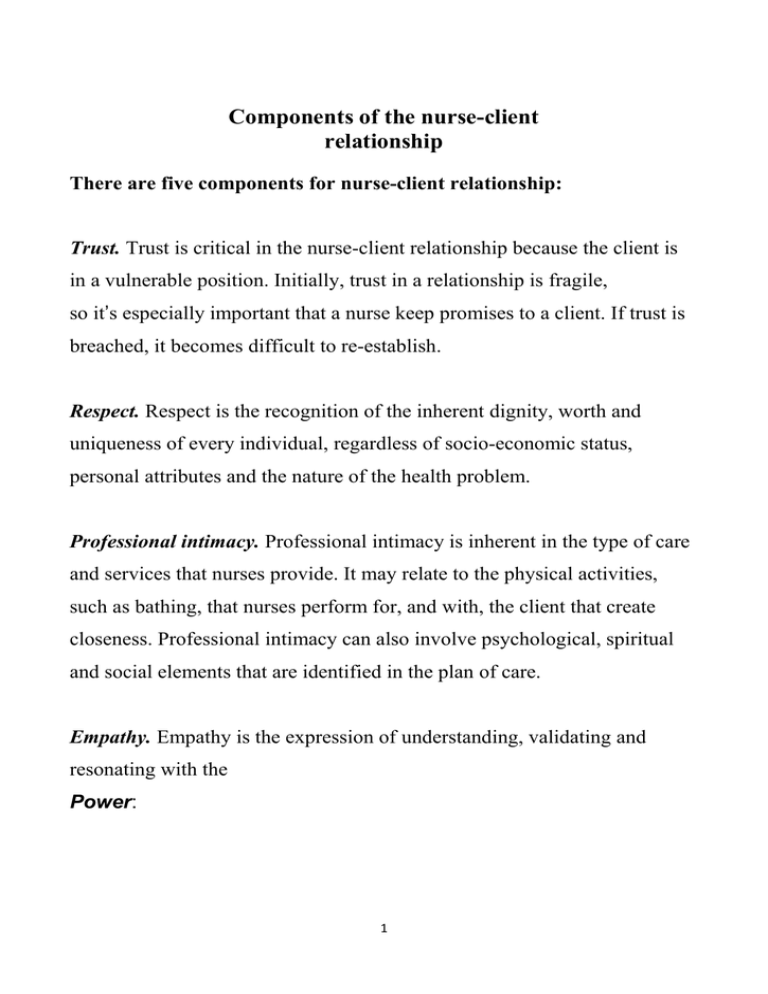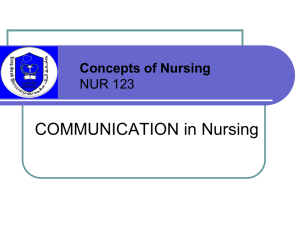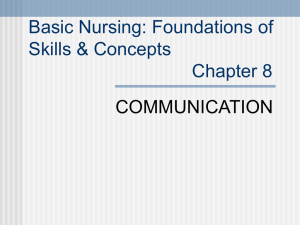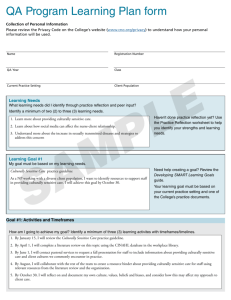Components of the nurse-client relationship
advertisement

Components of the nurse-client relationship There are five components for nurse-client relationship: Trust. Trust is critical in the nurse-client relationship because the client is in a vulnerable position. Initially, trust in a relationship is fragile, so it’s especially important that a nurse keep promises to a client. If trust is breached, it becomes difficult to re-establish. Respect. Respect is the recognition of the inherent dignity, worth and uniqueness of every individual, regardless of socio-economic status, personal attributes and the nature of the health problem. Professional intimacy. Professional intimacy is inherent in the type of care and services that nurses provide. It may relate to the physical activities, such as bathing, that nurses perform for, and with, the client that create closeness. Professional intimacy can also involve psychological, spiritual and social elements that are identified in the plan of care. Empathy. Empathy is the expression of understanding, validating and resonating with the Power: 1 Therapeutic communication The nurse meets the standard by: a) introducing herself/himself to the client by name b) addressing the client by the name and/or title that the client prefers c) giving the client time, opportunity and ability to explain himself/herself, d) informing the client that information will be shared with the health care team e) being aware of her/his verbal and non-verbal communication style f) modifying communication style, as necessary, to meet the needs of the client g) helping a client to find the best possible care solution by assessing the client’s level of knowledge, and discussing the client’s beliefs and wishes h) considering the client’s preferences i) providing information to promote client choice and enable the client to make informed decisions 2 j) listening to, understanding and respecting the client’s values, opinions, needs and ethno cultural beliefs and integrating k) recognizing that all behavior has meaning l) listening to the concerns of the family and significant others and acting on those concerns when appropriate and consistent with the client’s wishes; m) refraining from self-disclosure unless it meets a specific, identified therapeutic client need, rather than the nurse’s need; n) reflecting on interactions with a client and the health care team, and investing time and effort to continually improve communication skills; o) discussing, throughout the relationship, ongoing plans for meeting the client’s care needs after the termination of the nurse-client relationship (for example, discharge planning with the client and/ or referral to community organizations). 3





